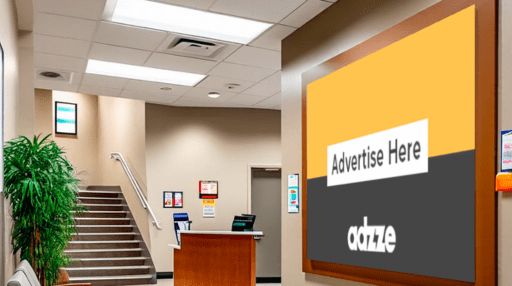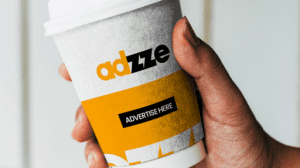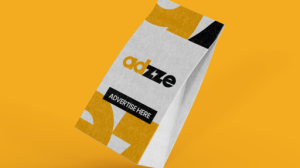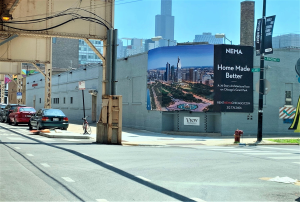In today’s digital landscape, advertising has become more pervasive than ever, leading to an overwhelming flood of messages competing for consumer attention. From online banners to social media ads, traditional advertising methods are often lost in the noise. So, how can brands effectively cut through this clutter and build meaningful connections with their audience? The answer lies in advertising specialty.
Advertising specialty refers to custom, in-hand ad placements—products and materials that consumers can physically engage with, such as branded merchandise or strategically placed items. These items serve as a form of advertising that consumers take with them, leading to repeated exposure and a much higher likelihood of recall. In this blog, we’ll explore why advertising specialties are so effective, dive into specific examples for various industries, and provide insights on measuring success.
What is Advertising Specialty, and How Does It Differ from Traditional Ads?
While traditional advertising typically relies on digital screens, print materials, or radio, advertising specialties break the mold by providing a tangible product or experience that audiences interact with. Instead of a fleeting banner ad or a 15-second commercial, advertising specialties involve physical items—anything from custom tote bags to branded items found in hotel rooms. These items keep a brand in the consumer’s sight, offering prolonged exposure that digital ads often fail to provide.
providing a tangible product or experience that audiences interact with. Instead of a fleeting banner ad or a 15-second commercial, advertising specialties involve physical items—anything from custom tote bags to branded items found in hotel rooms. These items keep a brand in the consumer’s sight, offering prolonged exposure that digital ads often fail to provide.
Unlike traditional ads, which are often skipped, blocked, or ignored, advertising specialties actively engage consumers. When a shopper or a conference attendee picks up an item with your brand’s logo, they’re not just seeing an ad—they’re holding a piece of your brand in their hands. This level of engagement creates a lasting impression and a connection that digital ads cannot replicate.
The Science of Ad Recall & Physical Engagement: Why Physical Advertising Makes a Lasting Impression
One of the main reasons advertising specialties work so effectively is their ability to tap into the psychology of memory and recall. Numerous studies have shown that consumers are far more likely to remember a brand when they physically engage with its promotional items.
Physical objects are processed differently in the brain than digital or auditory stimuli. Touch is one of the most powerful senses, and when consumers physically interact with a branded item, it creates a multisensory connection that strengthens brand recall. Think about a branded pen that’s always within reach or a shopping cart ad that you use during every trip to the store—these repeated interactions create a strong association between the brand and the consumer.
Moreover, the tangible nature of advertising specialties makes them more likely to be kept, reused, and passed on, which further extends brand exposure. Unlike digital ads that are often scrolled past, advertising specialties are often seen and used multiple times, extending the ad’s life well beyond its initial distribution.
Top Ad Specialties for Different Industries
Healthcare – Prescription Bags & Doctor’s Office Posters
The healthcare industry has long used advertising specialties to keep their services top-of-mind with patients. Prescription bags are a prime example of how branded items can provide repeated exposure. Every time a patient refills a prescription, they’re reminded of the healthcare provider’s logo. Even more effective are the posters and educational materials displayed in doctor’s offices. These items serve as both informative and promotional tools that keep healthcare brands visible in an often high-stakes, decision-making environment.
Retail & eCommerce – Door Hangers & Shopping Cart Ads
Retail businesses, both in physical stores and eCommerce platforms, can utilize advertising specialties to reinforce their messaging in a way that is both practical and highly visible. Consider branded door hangers for local retail shops, offering discounts or promotions. Customers are much more likely to engage with a tangible piece of marketing that they can place on their door for easy visibility. Similarly, shopping cart ads—whether in-store or online—can be a valuable tool. In-store shopping cart ads are in direct contact with the consumer as they shop, making them highly effective in driving impulsive purchases.
Tech & B2B – Hotel Key Cards at Industry Conferences
The tech and B2B sectors have found great success with advertising specialties that tie in with networking and business events. Hotel key cards at industry conferences are an excellent example. When companies print their logos and key information on hotel room cards, they’re ensuring that every business traveler visiting the event sees their brand multiple times. These key cards aren’t thrown away; they’re used, handled, and kept as mementos, which keeps the company top-of-mind even after the event is over. It’s a perfect, hyper-targeted piece of advertising that speaks directly to the professional needs of attendees.
Metrics That Matter: Measuring Success in Advertising Specialty
While the appeal of advertising specialties is clear, the real challenge for businesses is proving that they are a worthwhile investment. To measure success, businesses need to track a combination of both direct and indirect results. Here are a few key metrics to focus on:
Customer Retention & Repeat Exposure
One of the main benefits of advertising specialties is the repeated exposure they offer. To measure success, track how often branded items are being used, kept, or shared. For instance, if you distribute branded tote bags, monitor how often customers return to your store with the bag in hand. Retention metrics, such as repeat visits or repeat purchases, can also indicate how effective your branded items are in reinforcing brand loyalty.
Brand Recall & Surveys
Conduct surveys or polls with customers to gauge brand recall. Ask customers if they recognize your logo from the items they’ve interacted with. Higher levels of brand recall correlate directly with the effectiveness of advertising specialties. If customers are able to recall your brand more easily, it likely means that your branded items are working as intended.
Sales Conversion
Tracking how grocery ads or branded items affect consumer buying behavior is critical to measuring ROI. Monitor sales during or after distributing advertising specialties to determine any uptick in product sales. For example, if you offer a branded shopping bag with a discount coupon for a future purchase, track whether customers redeem the coupon and if they purchase more as a result. Conversion tracking tools, such as unique promo codes or QR codes on the items, can help measure this accurately.
Customer Feedback & Sentiment
Another way to assess the success of advertising specialties is through customer feedback. Encourage customers to provide comments or reviews about the promotional items. If they express enjoyment, gratitude, or surprise at receiving a high-quality branded item, this feedback can indicate positive engagement and the effectiveness of your ad strategy.








